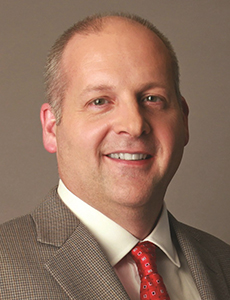PRMA’s Diane Delaney Discusses Private Client Insurance Trends

As part of our expanded coverage of our 2025 Power Broker® Private Client winners and finalists, Risk & Insurance recently spoke to Diane Delaney, the executive director of the Private Risk Management Association. What follows is a transcript of that discussion, edited for length and clarity.
Risk & Insurance: Thanks for meeting with us Diane. I know it’s a painful topic for many, but what impact did the recent wildfires in Pacific Palisades and Altadena have on the private client insurance space?
Diane Delaney: The recent wildfires in Los Angeles are expected to be the largest catastrophic wildfire in history to date. Current reports estimate the economic losses to be close to $28 billion, with many affected homes falling into the private client space.
While it’s too early to predict the precise impact on insurance in California, particularly for private clients, it’s clear that the situation will worsen. Insurance carriers are likely to become even more selective in the types of risks they are willing to take on.
Beyond the insured level, we anticipate an increase in home hardening requirements at the government and local levels. This may include mandating defensible space and fire-resistant materials for homes, rather than being mere recommendations from insurance companies.
R&I: What is the current interest level and traction of cyber risk management among private client insurers and their clients?
DD: From the client standpoint in the private client space, we know that high net worth individuals are more of a target because they’re often in the limelight and have a larger digital footprint. We’re starting to see an understanding from these clients that something has to be done, as almost every week, one of us is getting a phishing or scamming email.
There is a twofold concern. We’re starting to see more people purchase cyber products, which is a step in the right direction. However, the bigger piece is not just the cyber products these high net worth individuals are willing to put in place, but the risk management that will pair with it.
The carriers in the private client space and many cyber tech firms do a great job families on managing their digital footprint. They conduct security audits to assess vulnerabilities in home networks and personal devices, educate family members on digital hygiene, and ensure every aspect of their cyber exposure is resilient against threats.
Going hand in hand with purchasing more cyber coverage, clients want tips on prevention, which should be included when working with their private client insurers. As cyber is advancing rapidly, insurers must keep up with the types of products needed to properly protect the insured and make them whole, moving at a quicker pace.
R&I: Can you share some key lessons learned from hurricanes Beryl and Helene, particularly regarding their impact on private client insurers and insureds?
DD: Hurricanes Beryl and Helene provided significant learning opportunities for the private client insurance industry. In the aftermath of these events, discussions centered around the impact on private client insurers and, more importantly, the insureds.
Hurricane Helene, in particular, highlighted the consequences of flood exclusions in insurance policies. Many insureds found themselves without coverage and had to bear the costs out of pocket, as Helene was primarily a flooding event.
While the impact on insurers was less severe, unless flood policies were in place, it was a huge learning lesson for the insureds. This experience underscores the importance of discussing flood coverage with private clients and encouraging them to secure appropriate policies before such events occur.
As an industry, we must continue to emphasize the significance of proactive flood coverage to prevent similar situations in the future. The key takeaway is that waiting until after a catastrophic event is too late, and we must persistently educate and guide our clients to ensure they have adequate protection in place.
R&I: How would you characterize the common misconception that flood insurance is unnecessary for those not living in a designated flood plain or near water?
DD: This is an issue that needs to be addressed. It’s important for insurance providers to understand that flood damage can occur from any water entering the home from outside, not just from living near a body of water or in a designated flood zone.
Another factor to consider is the impact of ongoing construction in many areas. When construction takes place, it can alter the grading of the land surrounding a property. These changes in land grading often contribute to the occurrence of floods in areas that were previously not prone to such incidents.
R&I: What qualities define a standout private client broker?
DD: They are a risk management advisor, not just a broker. Their approach with the insured is consultative rather than transactional.
They take the time to understand the insured’s concerns, priorities, and lifestyle. When providing solutions, they guide and educate the insured on necessary coverages, aligning them with the client’s expressed concerns rather than simply pushing products.
Not every product or coverage is suitable for a private client, and it doesn’t have to be. The key is finding the right balance of education and understanding what matters most to the client.
R&I: What additional support do you see private clients needing from insurers and brokers in the current landscape, beyond the areas of cyber and flood risk?
DD: Both insurers and brokers can provide critical risk management expertise to support private clients. For brokers, their role extends beyond simply placing coverage for the insured; they must take it a step further.
Carriers have a responsibility to educate brokers on this aspect, which is something the industry is doing well and will continue to improve upon. When discussing an insured’s home, brokers need to be equipped with the knowledge to advise on measures that make the property more desirable to insurance carriers and mitigate risk.
This includes having regular conversations about leak detection systems and backup generators, depending on the catastrophic locations clients reside in. Brokers must be armed with information to discuss hurricane-prone areas, including flood venting, shutters, and recommended windows.
For insureds in wildfire areas, brokers should be knowledgeable about non-combustible products. It is critical in the private client space for brokers and insurers to have these conversations and remain relevant to clients by ensuring they are not only placing coverage but also helping to mitigate risk and exposure.
R&I: How can the insurance industry remain relevant to the economy and customers during these challenging times?
DD: There are a couple of key points to consider here. First, it’s crucial for our insureds to understand that insurance is truly about the transfer of risk. Independent agents or brokers should guide clients on how much risk they want to cover and what’s most important to protect.
These brokers can partner with wealth advisors or planners to assess the potential impact of a catastrophic event. It’s not about filing claims for minor incidents; insurance is there for times when you really need it, and your broker will guide you through those situations. We must help shift the mindset around insurance and clarify its purpose.
Second, as an industry, we must adapt to the changing needs and preferences of the younger generation who will inherit wealth. They live in a digital era, so we’ll likely see a merger of traditional consultative advice and digital solutions. However, the current catastrophic events have proven that we still need brokers to guide us, and computers can’t fully replace that human touch.
We must also better understand what the younger generation values and wants to insure, which may differ from their parents. For example, the way cars were purchased and used in the past is different from how the younger generation approaches collector cars. We have to adapt our insurance offerings to cater to the needs of this next generation as they enter the market. &










